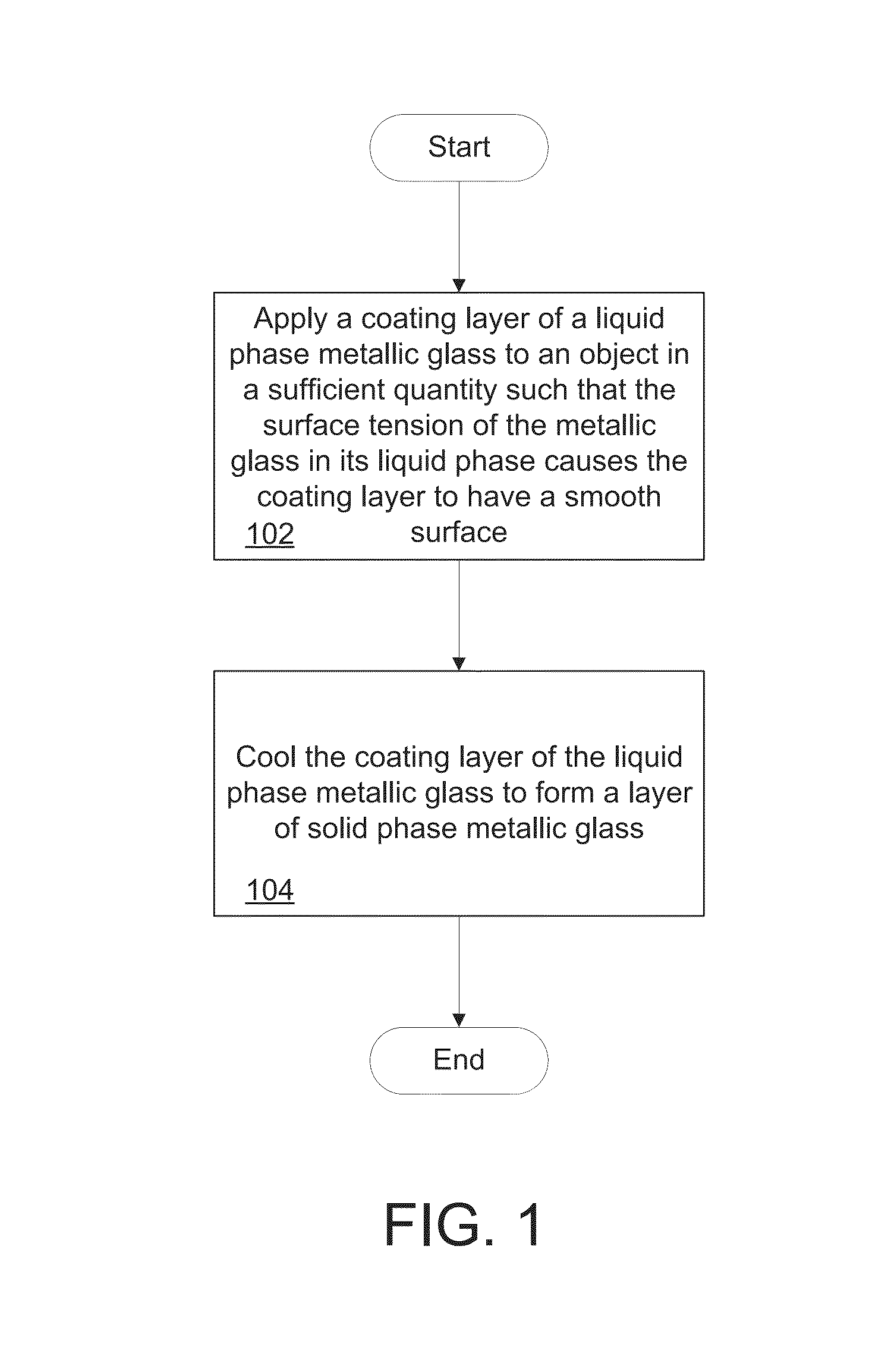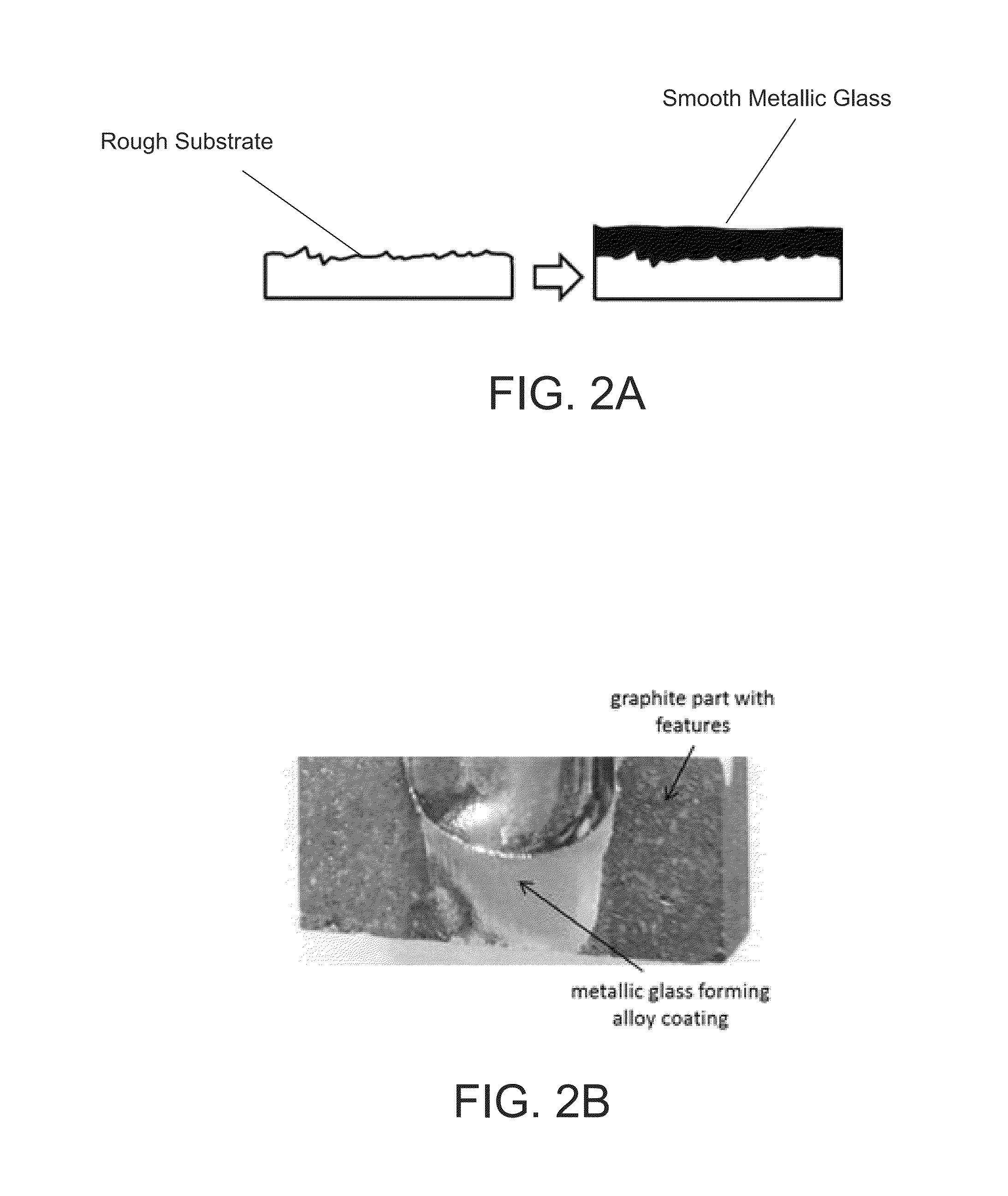Methods of fabricating a layer of metallic glass-based material using immersion and pouring techniques
a technology of metallic glass and pouring, applied in the direction of molten spray coating, coating, molten casting coating, etc., can solve the problems of limited thickness with which metallic glasses could be formed, limited viability of engineering materials, and limited thickness of metallic glasses initially, so as to achieve a lower melting temperature
- Summary
- Abstract
- Description
- Claims
- Application Information
AI Technical Summary
Benefits of technology
Problems solved by technology
Method used
Image
Examples
Embodiment Construction
[0035]Turning now to the drawings, systems and methods for implementing layers of metallic glass-based materials are illustrated. For the purposes of this patent application, the term ‘metallic glass’ shall be interpreted to be inclusive of ‘metallic glass composites’, except where otherwise noted. Metallic glass composites are characterized in that they possess the amorphous structure of metallic glasses, but they also include crystalline phases of material within the matrix of the amorphous structure. Crystalline phases can allow a material to have enhanced ductility, compared to where the material is entirely constituted of the amorphous structure. Many techniques can be used to implement layers of metallic glass, e.g. metallic glass coatings on objects. However, many of the techniques that have been used thus far exhibit a number of shortcomings. For example, thermal spraying techniques have been used to implement metallic glass coatings. Thermal spraying techniques generally re...
PUM
| Property | Measurement | Unit |
|---|---|---|
| critical cooling rate | aaaaa | aaaaa |
| thickness | aaaaa | aaaaa |
| thickness | aaaaa | aaaaa |
Abstract
Description
Claims
Application Information
 Login to View More
Login to View More - R&D
- Intellectual Property
- Life Sciences
- Materials
- Tech Scout
- Unparalleled Data Quality
- Higher Quality Content
- 60% Fewer Hallucinations
Browse by: Latest US Patents, China's latest patents, Technical Efficacy Thesaurus, Application Domain, Technology Topic, Popular Technical Reports.
© 2025 PatSnap. All rights reserved.Legal|Privacy policy|Modern Slavery Act Transparency Statement|Sitemap|About US| Contact US: help@patsnap.com



